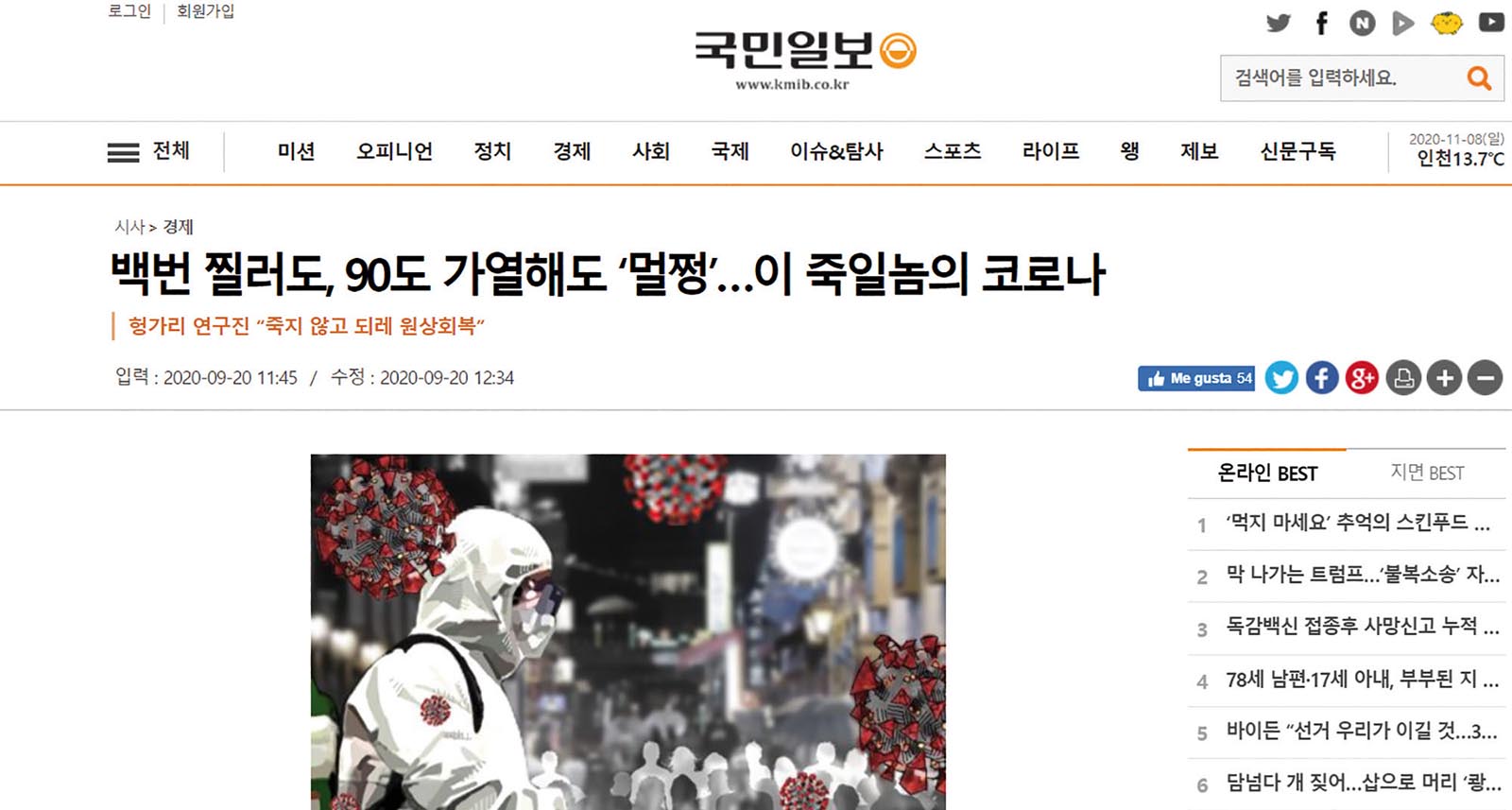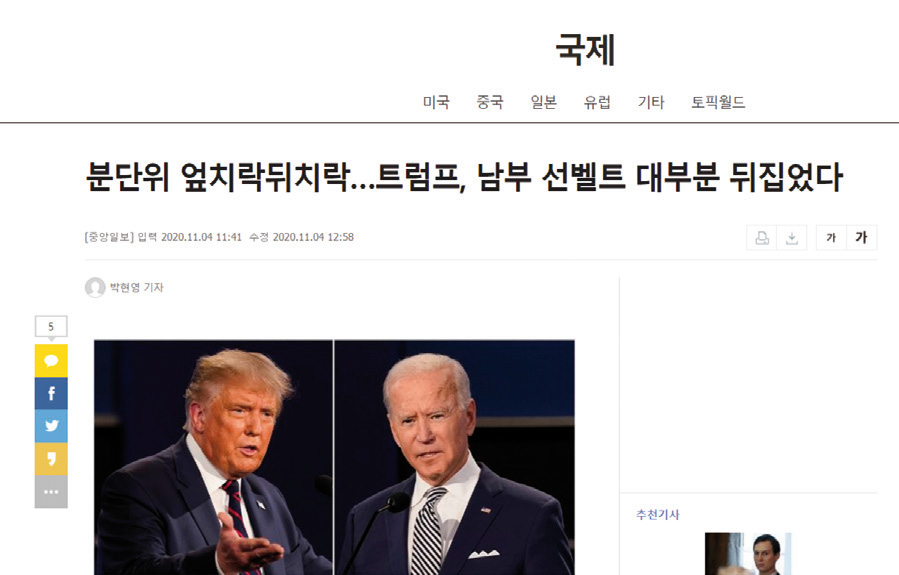Knock, knock! The great success of ideophones in Korean journalism
Korean is an extremely phono-symbolic language, whereby the sounds themselves carry meaning. One of the biggest challenges when learning Korean is to understand and fully utilize this subtle character of the language, yet most non-native speakers will acknowledge the absolute importance of mastering this skill. For example, becoming proficient in the use of what are known as ideophones is vital for effective communication since a breadth of meanings and emotions are condensed into one word or phrase. Ideophones, although found in most languages, are particularly abundant in Korean; and unlike in most languages, in Korean, ideophones are even commonly used in more formal contexts, such as Newspaper headlines.
Scope and language register
An onomatopoeia imitates a sound perceived by the human auditory system (crash, quack, shush, etc.), whilst an ideophone is a sound-symbolic word that produces a sensory description, i.e., the sound of the word denotes an idea (squidgy, zigzag, flutter, etc.). By evoking sensations, impressions, states, or emotions, ideophones build an emotional intermediary between the speaker and the listener.
There is an extensive repertoire of ideophones across the globe, including in East Asia, especially Korea and Japan, in Southeast Asia, particularly in Vietnam and Cambodia, and also in Central Africa. Despite the presence of ideophones in many languages, including English, there are important differences regarding the scope and the language register they are associated with. For example, countries with a modest or marginal usage of these words often associate ideophones with conversational, immature and vulgar scopes, or relate them to low registers of the language. However, Korean ideophones are applied in formal and informal registers, in both speaking and writing language. They are found in manhwa [webtoons], novels, social media, newspapers, informal speech and formal speech, being possibly only absent from official documents.
Ideophones in Korean newspapers
It is extremely rare to find ideophones in European newspapers. Even though headlines can be observed to feature short words, with a minimal inclusion of verbs, articles, word play, noun string and alliteration, the information in newspapers must be clearly organized, the language mostly formal and cultivated, sentences simple and coherent, not to mention the importance of a good journalistic style with a rich variety of vocabulary and a rigorous narrative structure.
In contrast, ideophones can be easily found in South Korean newspapers, in both the headlines and throughout the article itself. This is not a matter of journalistic quality. Korea’s main newspapers – Kukmin Ilbo, Segye Ilbo, Maeil Gyeongje, JoongAng Ilbo or Chosun Ilbo, among others – publish daily articles in which ideophones play a relevant role, especially when they are used in the headline. The examples provided here are only a few of the wide uses of these sound-symbolic terms in Korean journalism, more specifically, in newspaper headlines.

Fig. 1: Kukmin Ilbo “Baekbeon jjilleodo, 90do gayeolhaedo “meoljjeong”… I jugil nomui korona” https://bit.ly/3t2MjCh
Kukmin Ilbo recently published the article “Baekbeon jjilleodo, 90do gayeolhaedo ‘meoljjeong’… I jugil nomui korona” (백번 찔러도, 90도 가열해도 ‘멀쩡’…이 죽일 놈의 코로나). (fig.1) This headline literally means: “Even if you stab it a hundred times or heat it up to 90 degrees, it’s still ‘fine’ … this damn Coronavirus”. Not only is the ideophone meoljjeong (멀쩡) used, it is also emphasized with quotation marks. This polysemic word refers to something that remains intact, unscathed, sane or sober. Furthermore, it evokes in the receiver a particular feeling of strength, lucidity, power or robustness, which seems unstoppable or invincible. Thus, this ideophone conveys the sense that the Coronavirus remains unscathed and seems invincible. Ideophones have an extraordinary descriptive power that allows receivers to develop a deep emotional understanding of the message the headline is conveying.
The main objective of newspaper headlines is to attract and have an impact on the readers. They must be short and simple, yet attractive and impressive. Ideophones are equipped with all these features: they are short yet splendidly descriptive, and impressive in their ability to evoke emotional reactions and impressions. JoongAng Ilbo published an article on the recent US elections with the headline, “Bundanwi eopchirakdwichirak Tteureompeu, nambu seonbelteu daebubun dwijibeotda” (분단위 엎치락뒤치락…트럼프, 남부 선벨트 대부분 뒤집었다); (fig.2) literally translated as: “Up and down minute by minute… Trump flips most of the Southern Sun Belt”. The ideophone eopchirakdwichirak (엎치락뒤치락) has two contrasting, yet parallel meanings. It describes a person who tosses and turns in bed, unable to sleep, and it also depicts a dingdong, a race, a close game or a fight at close quarters. It expresses a continuous change of positions: up and down. At the beginning of counting the votes for the US presidential elections, it was difficult to predict the winner, since the results changed every single minute. The one word, eopchirakdwichirak (엎치락뒤치락), perfectly denotes both the flip-flopping and the struggle.

Fig. 2: JoonAng Ilbo “Bundanwi eopchirakdwichirak Tteureompeu, nambu seonbelteu daebubun dwijibeotda” https://news.joins.com/article/23911611
Chosun Ilbo issued the article “Baideun seungnihamyeon dakgogi-gematsal tteunda? Harim-Hanseong juga ‘deulsseok’” (바이든 승리하면 닭고기·게맛살 뜬다? 하림·한성 주가 '들썩'); literally: “If Biden wins will the price of chicken and crab rise? Harim and Hansung stock prices ‘soar’”. The ideophone deulsseok (들썩) describes an object stuck to something else, and thereby easily lifted, yet also evokes a feeling of flutter and excitement. It is astounding how one single word, formed by two syllables, can comprise a wide variety of implications, sensations and impressions. Again, the ideophone is enclosed by quotation marks to attract the reader’s attention and emphasize its meaning.
There are some cases where two ideophones are used in one headline. For example, Segye Ilbo issued the article “Gwangwangjineun bukjeok, maseukeuneun ‘hwik’… jiyeokgamnyeom jaehwaksan uryeo” (관광지는 북적, 마스크는 '휙'… 지역감염 재확산 우려), translated as “The tourist spots are crowded, the masks are ‘off’… Regional infection proliferation is being worried about”. Bukjeok (북적) describes the sound of people moving and noisily talking. It is normally translated as crowded, yet it is more sensorial than that. Hwik (휙), as most ideophones, is polysemic (it can have multiple meanings depending on the context). Normally it symbolizes the sudden and strong sound of an object flapping in the wind. However, here it equates that sound with the one made when energetically removing a face mask.
Maeil Gyeongje is one of the main economic newspapers in South Korea. Recently, it published the article “Peolpeol kkeulleun Busan jipgap, seokdalsae 10eok ‘ssuk’” (펄펄 끓는 부산 집값, 석달새 10억 '쑥 '), (fig.5) or: “Boiling Busan house prices, 1 billion ‘rise’ in three months”. Two ideophones have been used in this short headline. Peolpeol (펄펄) describes something boiling or burning with intensity; ssuk (쑥) expresses something being boosted abruptly. Ideophones convey clear images as they create emotionally charged sensations and impressions. In addition, ideophones’ simple yet expressive and rhythmical features have the added ability of capturing the readers’ attention and to motivate them to keep reading.
Despite the marginal use of ideophones in formal contexts in European languages, especially in comparison with Asian or African languages, these illustrative words are widely used in all registers of the language in Korean, including in the official arena of newspapers. Ideophones are commonly used in Korean journalism to draw attention to headlines and connect with the reader emotionally. This highlights the significant role of these words in Korean, and the necessity to properly introduce ideophones when teaching Korean as a foreign language.
Cristina Bahón-Arnaiz is a visiting Korean language professor at the Autonomous University of Madrid. Her PhD thesis was related to the linguistic and literary aspects of Korean ideophones cristina.bahon@uam.es